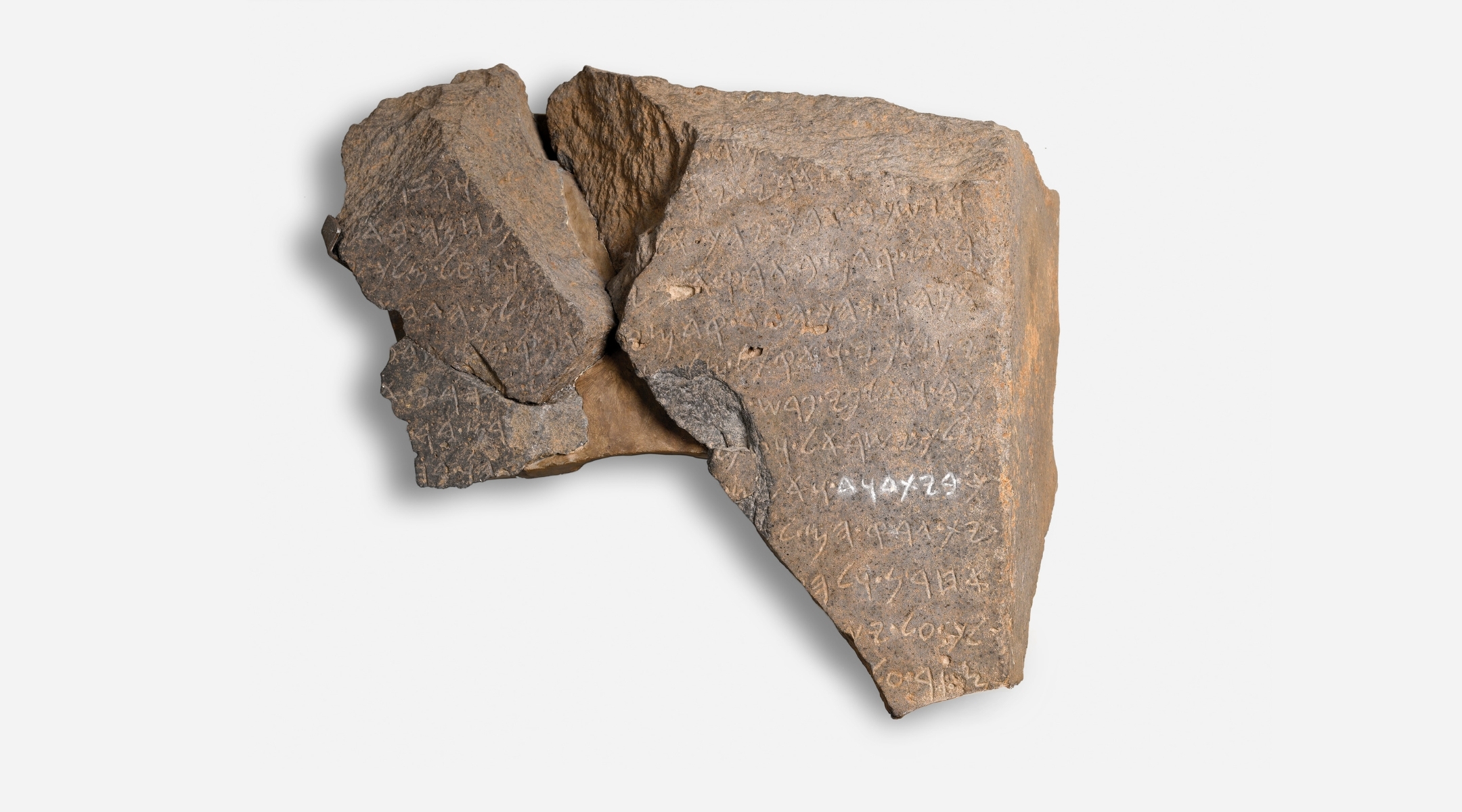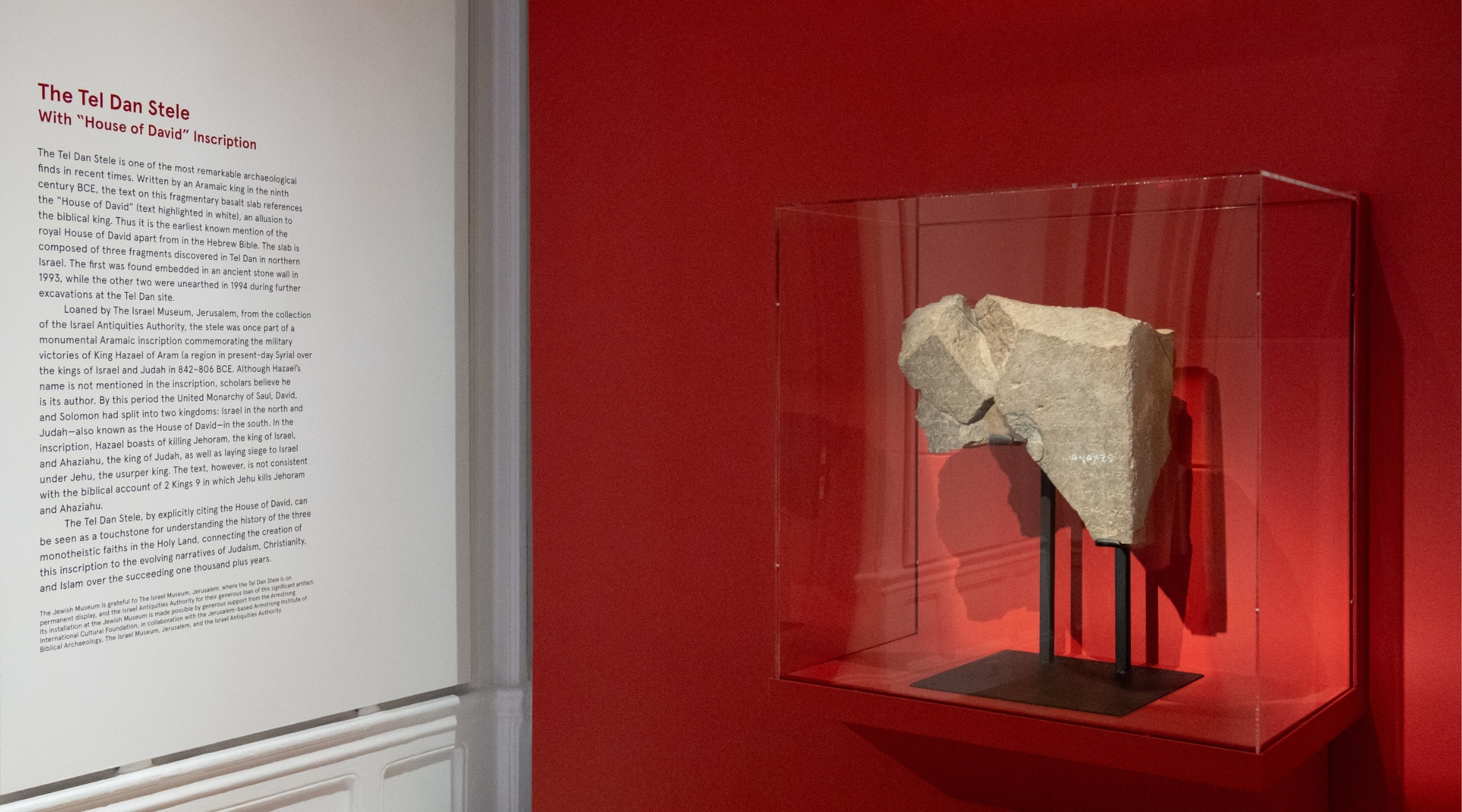Last year, New York City’s Jewish Museum imported a new director from the Israel Museum. Now, it’s bringing the oldest archaeological evidence of the existence of King David from the Jerusalem museum, too.
The Tel Dan Stele, a stone fragment long held exclusively by the Israel Museum, is on view at the Jewish Museum on the Upper East Side until Jan. 5.
A 12-by-13 inch chunk of basalt, the Tel Dan Stele is a 9th-century BCE stone document acknowledging the military victories of a person whom scholars believe to be King Hazael of Aram, an area in contemporary Syria that includes what is today Damascus. One of those victories was over a descendant of David, the king of ancient Israel.
When it was discovered in northern Israel in 1993, the Tel Dan Stele became the earliest evidence beyond the Bible that King David was a real figure.
“There is no archeological evidence surviving from the First Temple,” said James Snyder, who took the helm of the Jewish Museum a year ago. “There is from the Second Temple, and that’s at the Israel Museum. From the First Temple, what therefore becomes important are these references to this archeological evidence of the time of the First Temple, and of evidence that reinforces biblical history.”
The First Temple, believed to have been built by David’s son King Solomon in the 10th century BCE, was destroyed during the Babylonian siege of Jerusalem in 586 CE.

‘House of David’ highlighted in white in a fragment of the 9th century BCE Tel Dan Stele. (Courtesy of The Israel Museum, by Meidad Suchowolski)
“What makes the Tel Dan Stele so important is that it’s the oldest archeological evidence of the existence of the House of David, which is the sort of touchstone or fountainhead for the unfolding thereafter of Judaism, Christianity and then Islam,” Snyder added.
In fact, it’s so old that the Aramaic used in the stele was still being written in the Phoenician alphabet — a language that predates Aramaic.
The ancient inscription refers to the “House of David,” in translation saying, “[I killed Jeho]ram son of [Ahab] king of Israel, and [I] killed [Ahaz]iahu son of [Jehoram kin]g of the House of David.”
Before coming to the Jewish Museum, the stele was on display for nearly two months at a biblical archaeology museum in Oklahoma. It was previously displayed at the Metropolitan Museum of Art, just blocks from the Jewish Museum, a decade ago. (A replica is also on display at the Museum of the Bible in Washington, D.C.)
On view at the Jewish Museum — which recently opened an on-site kosher restaurant, filling the space left vacant by Russ & Daughters during the pandemic — only a few weeks, Snyder says the stele is a treasure for the institution, which he said is increasingly aiming to draw connections between Jewish history and material culture and contemporary art.
Snyder said the loan had been in the works for a few years — beginning while he ran the Israel Museum — but added that it feels particularly timely to have it in the museum after the Hamas attack on Israel on Oct. 7, 2023.
“The House of David has equal importance to the three monotheistic faiths that percolated in the region over 1,500 years,” Snyder said. “So it’s from Judaism to Christianity to Islam. So the House of David is really the monarchy that envisioned and enabled the unfolding of those monotheistic traditions, and they happened in sequence.”
He added, “This archeological fragment is a perfect example of the intersection of where archeology and biblical history meet.”
The artifact is displayed as part of an exhibition of standout items from the museum’s collection of more than 30,000 works, reflecting “an ever-evolving understanding of the relationship between art and global Jewish culture across time,” according to the museum’s website. The museum is currently renovating its third- and fourth-floor galleries, which are scheduled to open in next fall.
Across from the stele is a video installation of poppies created this year by Israeli artist Michal Rovner, which explores the coexistence of beauty and violence in nature.
“Culture is an antidote to the polarization and politicization of the times we’re living in,” Snyder said. “Culture is an opportunity to engage in ways that get into a brighter time ahead.”
The New York Jewish Week brings you the stories behind the headlines, keeping you connected to Jewish life in New York. Help sustain the reporting you trust by donating today.





